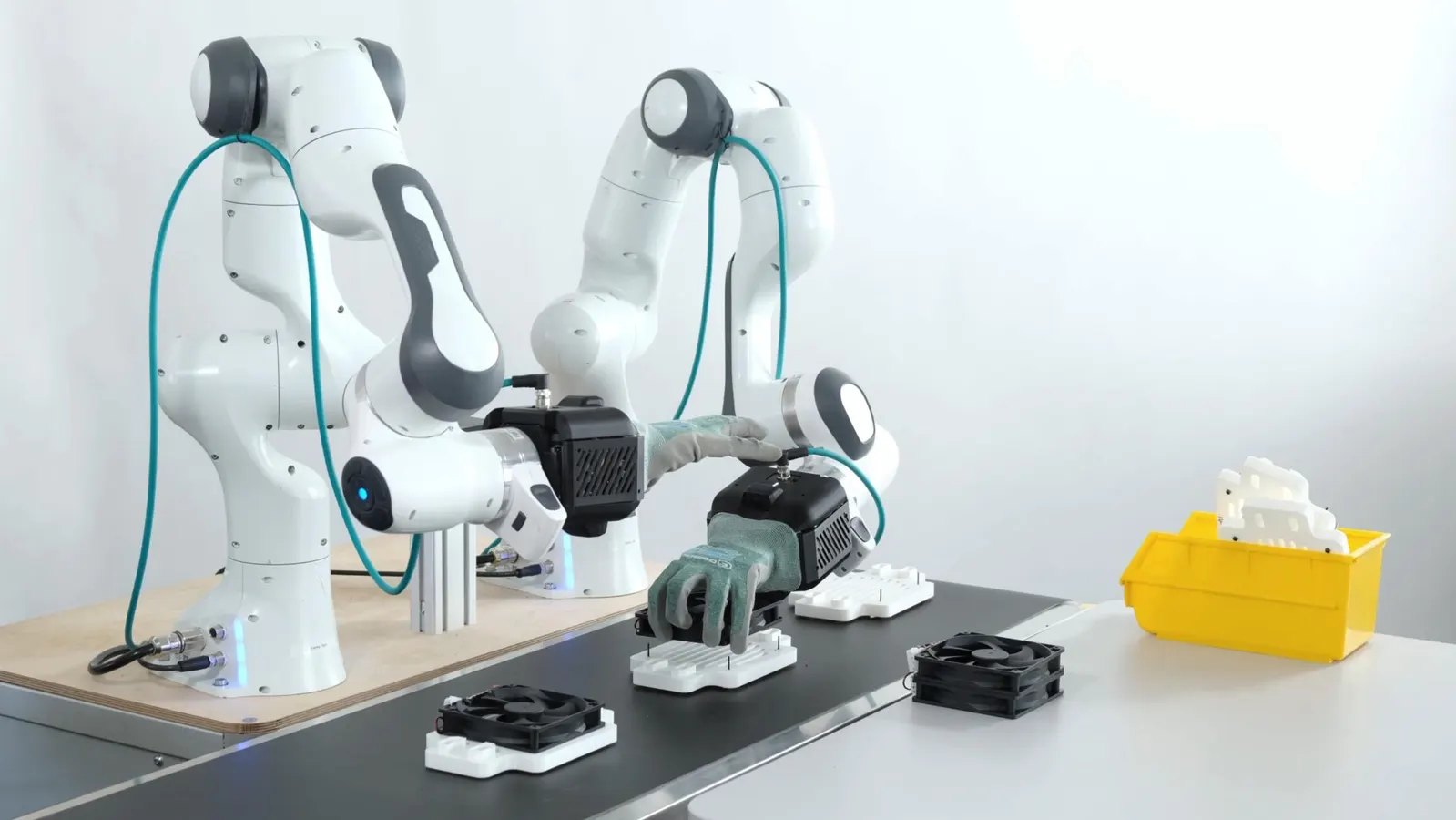Copyright forbes

Mimic says its robotic hands are a more practical solution for manufacturers than full humanoid robots Robotics is the future for manufacturing, with adoption accelerating all around the world. Data released in recent weeks by the International Federation of Robotics reveals more than 540,000 robots were installed in industrial settings last year, twice as many as 10 years ago. Such reports conjure up images of factory floors manned by robot figures who have replaced their human counterparts. That will undoubtedly be one element of the story – last month, for example, Boston Dynamics, owned by the giant automotive business Hyundai, launched the latest version of its Atlas humanoid robot, designed for industrial work. But a small Swiss start-up thinks at least part of the future will look very different. Zurich-based Mimic, which is today announcing a $16 million fund-raising, believes full-figure, humanoid robotics is an over-complicated solution for most industrial and manufacturing tasks. Instead, it manufactures robotic hands, which are mounted on conventional robot arms and have sufficient finesse to undertake a wide range of challenging tasks. “Humanoids are exciting, but there aren’t many industrial scenarios where the full-body form factor truly adds value,” says Stephan-Daniel Gravert, co-founder and chief product officer at Mimic. “Our approach pairs AI-driven dexterous robotic hands with proven, off-the-shelf robot arms to deliver the same capabilities in a way that is much simpler, more reliable and rapidly deployable.” I first interviewed Mimic 18 months ago, when it was raising its first $2.5 million round. Since then, the company has grown its workforce from five to 25 and launched a number of pilot projects with Fortune 500 companies and leading automotive sector manufacturers. MORE FOR YOU The company’s challenge has been two-fold. It has had to build a robotic hand with similar capabilities to a human hand – tricky, given that the latter contains more than 30 muscles, some 27 joints and 17,000 touch receptors and nerve endings. It has also had to find a way of training the hand so that it can be deployed in multiple different settings to complete a wide variety of tasks. That’s where the artificial intelligence comes in, explains Gravert. “We ask factory workers to wear a glove that is capable of capturing extensive data about how they perform their daily tasks,” he says. This data is then used to train AI models that ensure Mimic’s robotic hands can reproduce human technique, including reacting to the changing environment in which they work. Do workers resent being asked to help train the technology that could one day replace them? The reality, Mimic argues, is that many workers are keen to pass on the boring and repetitive parts of their jobs to robotic colleagues. And in any case, in Europe, in particular, many manufacturers face significant labour shortages – robots could fill the gap, especially as the trend towards re-shoring and near-shoring production facilities gathers pace. Demand for its products is outstripping supply, says Mimic, with Gravert predicting that its full-scale commercial deployments of its robotic arms will begin within the next one to two years. That’s in line with analyst predictions about market growth. A recent study from Grand View Research put the value of the global industrial robotics market size at $33.9 billion last year and predicted annual growth of almost 10% to reach $60.5 billion by 2030. That pace of adoption is exciting Mimic’s investors. Today’s $16 million round, aimed at speeding the company’s journey towards commercialisation at scale, is lead by Elaia, alongside Speedinvest, with participation from Founderful, 1st kind, 10X Founders, 2100 Ventures and Sequoia Scout Fund. It takes the total amount of money raised by the company to more than $20 million. “Mimic is addressing one of the most challenging problems in physical AI: dexterous manipulation,” says Clément Vanden Driessche, a partner at Elaia. “Its breakthrough approach integrates a proprietary robotic hand, state-of-the-art foundation models for robotics, and novel data acquisition and training methods.” Andreas Schwarzenbrunner, general partner at Speedinvest, thinks Mimic can help Europe compete in the global race to develop new robotics solutions. “Mimic’s platform unlocks human-level dexterity with frontier AI and solves billion-dollar problems on factory floors today,” he says. “This is the moment Europe steps forward to compete and lead in the new era of AI and robotics.” Editorial StandardsReprints & Permissions



